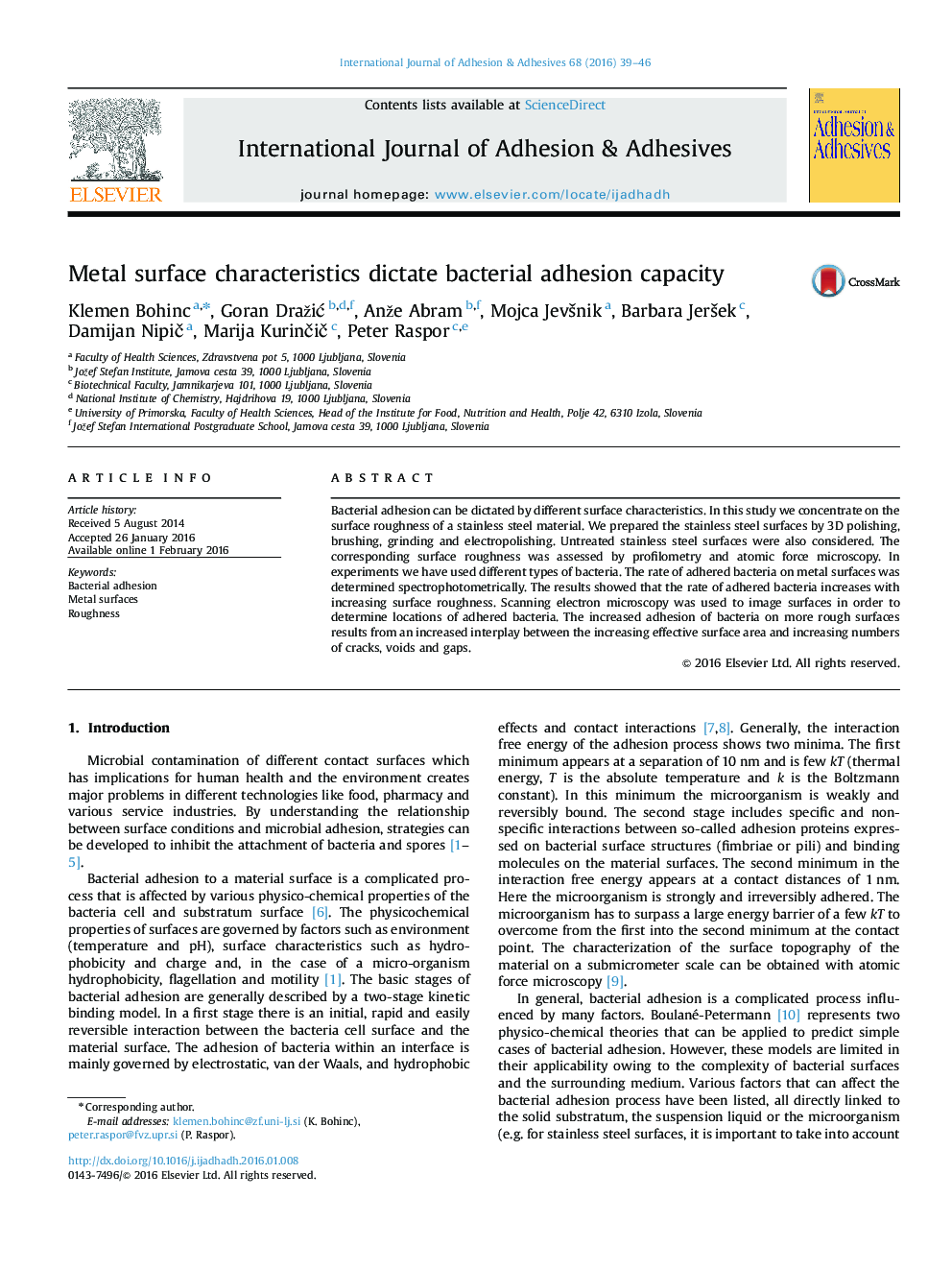| Article ID | Journal | Published Year | Pages | File Type |
|---|---|---|---|---|
| 7171054 | International Journal of Adhesion and Adhesives | 2016 | 8 Pages |
Abstract
Bacterial adhesion can be dictated by different surface characteristics. In this study we concentrate on the surface roughness of a stainless steel material. We prepared the stainless steel surfaces by 3D polishing, brushing, grinding and electropolishing. Untreated stainless steel surfaces were also considered. The corresponding surface roughness was assessed by profilometry and atomic force microscopy. In experiments we have used different types of bacteria. The rate of adhered bacteria on metal surfaces was determined spectrophotometrically. The results showed that the rate of adhered bacteria increases with increasing surface roughness. Scanning electron microscopy was used to image surfaces in order to determine locations of adhered bacteria. The increased adhesion of bacteria on more rough surfaces results from an increased interplay between the increasing effective surface area and increasing numbers of cracks, voids and gaps.
Related Topics
Physical Sciences and Engineering
Engineering
Mechanical Engineering
Authors
Klemen Bohinc, Goran DražiÄ, Anže Abram, Mojca JevÅ¡nik, Barbara JerÅ¡ek, Damijan NipiÄ, Marija KurinÄiÄ, Peter Raspor,
